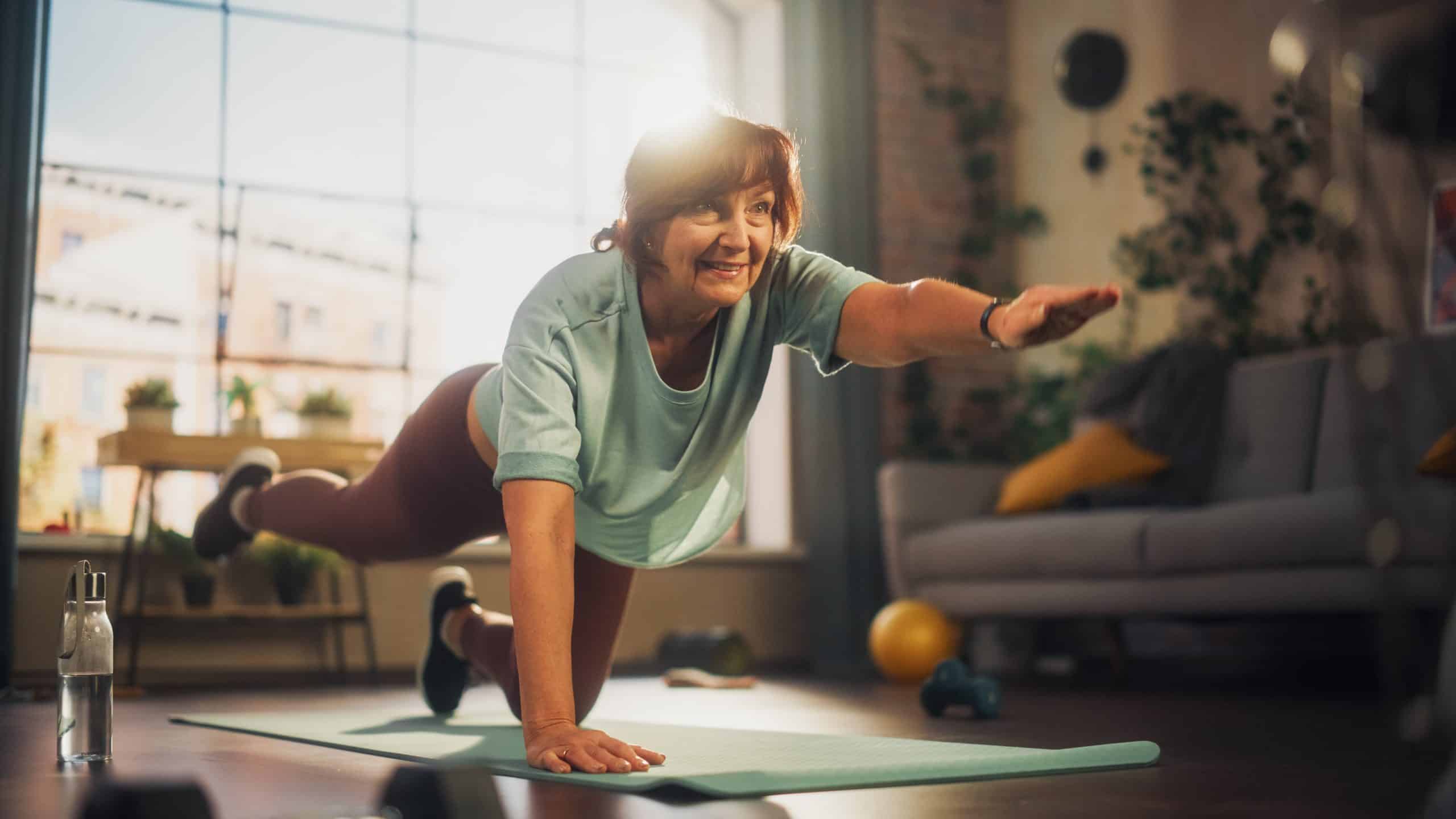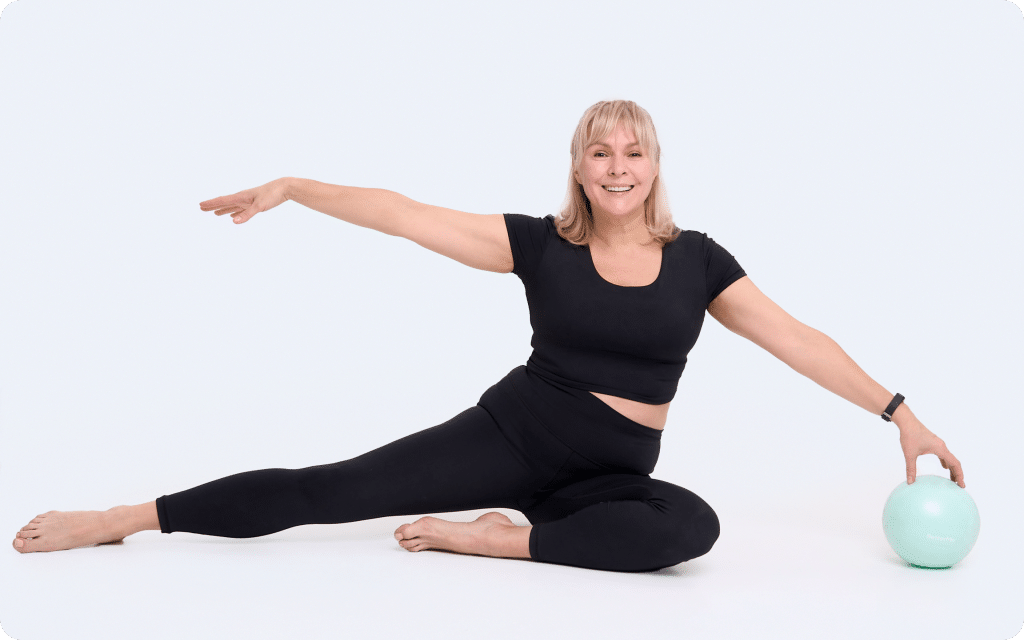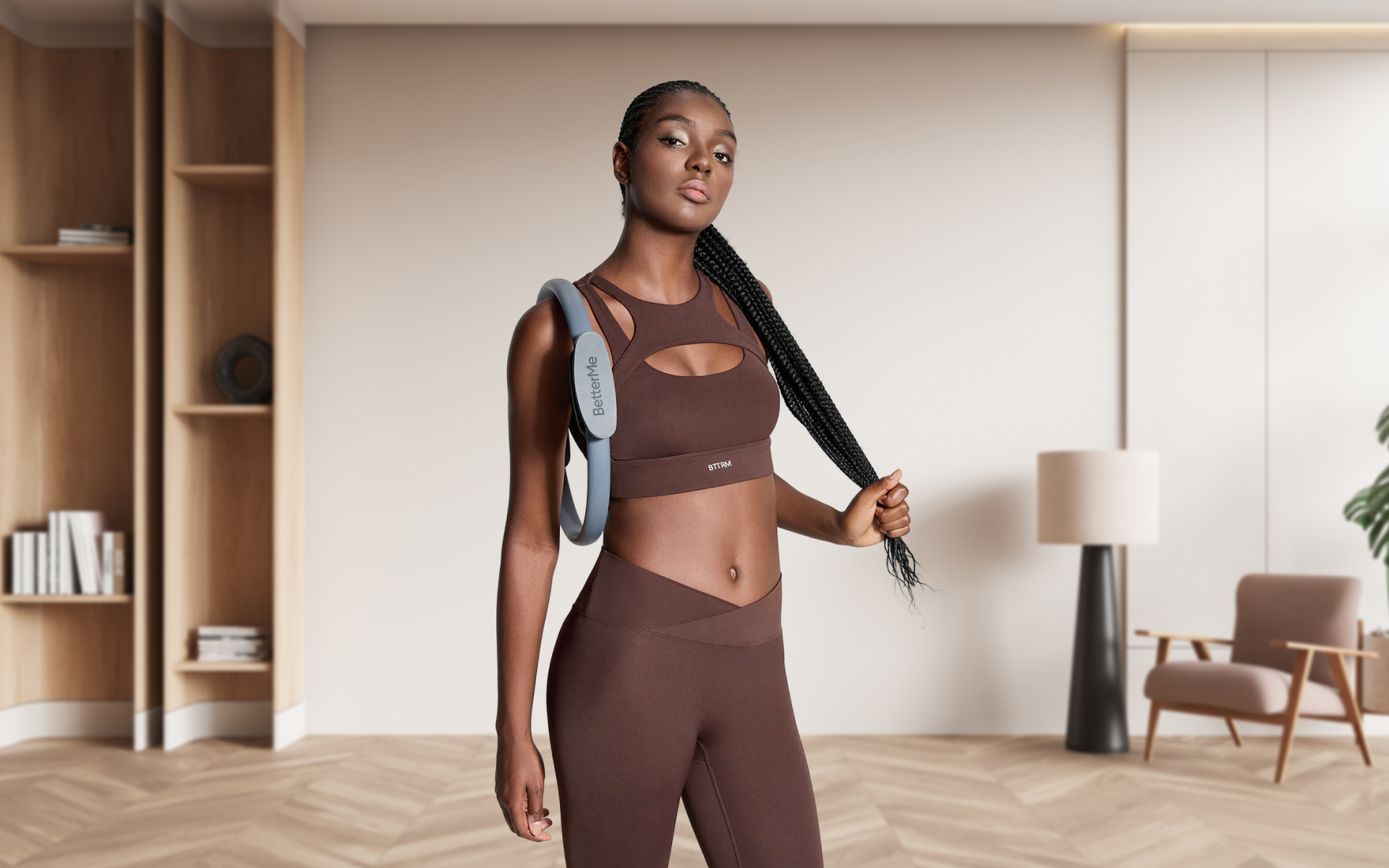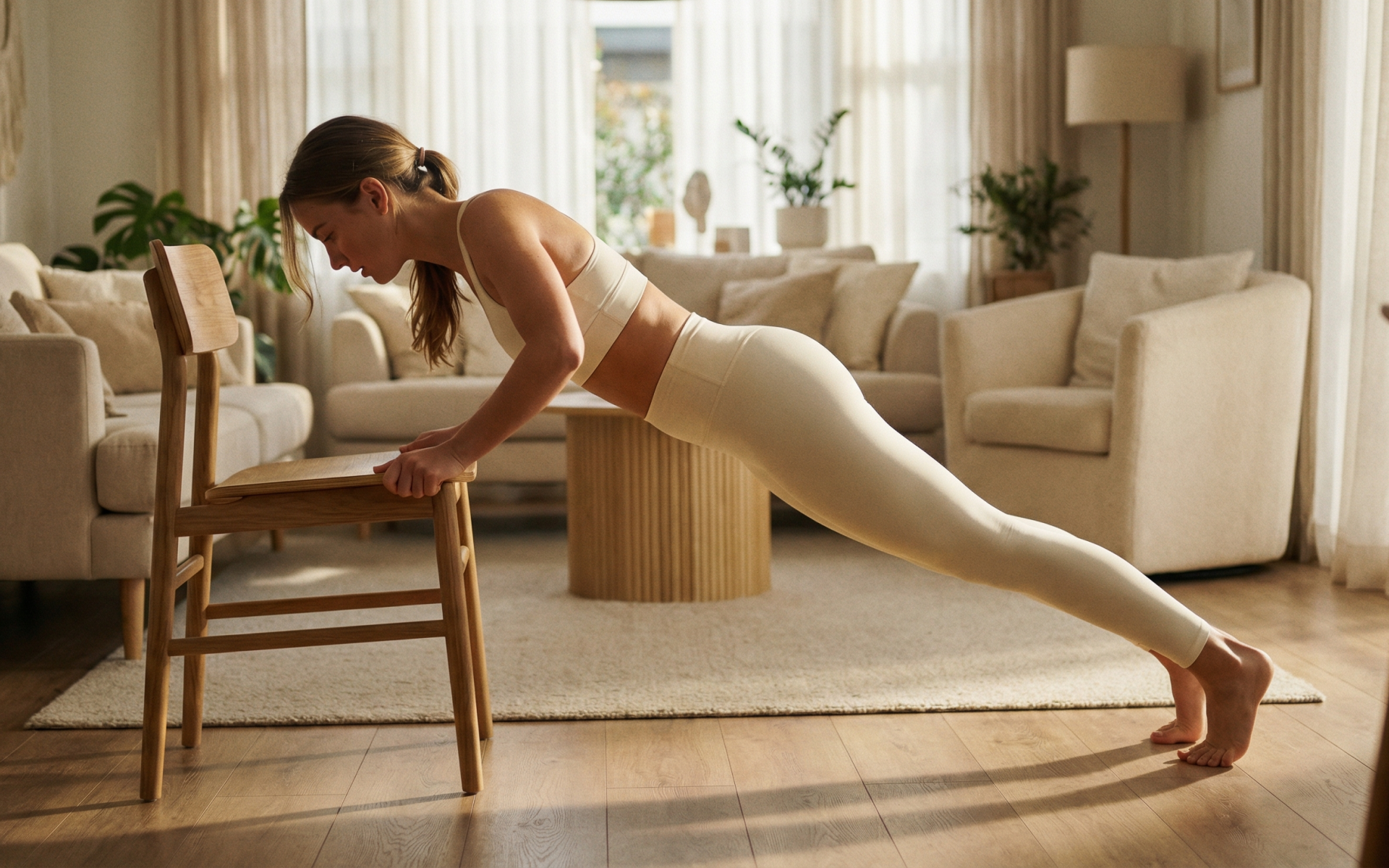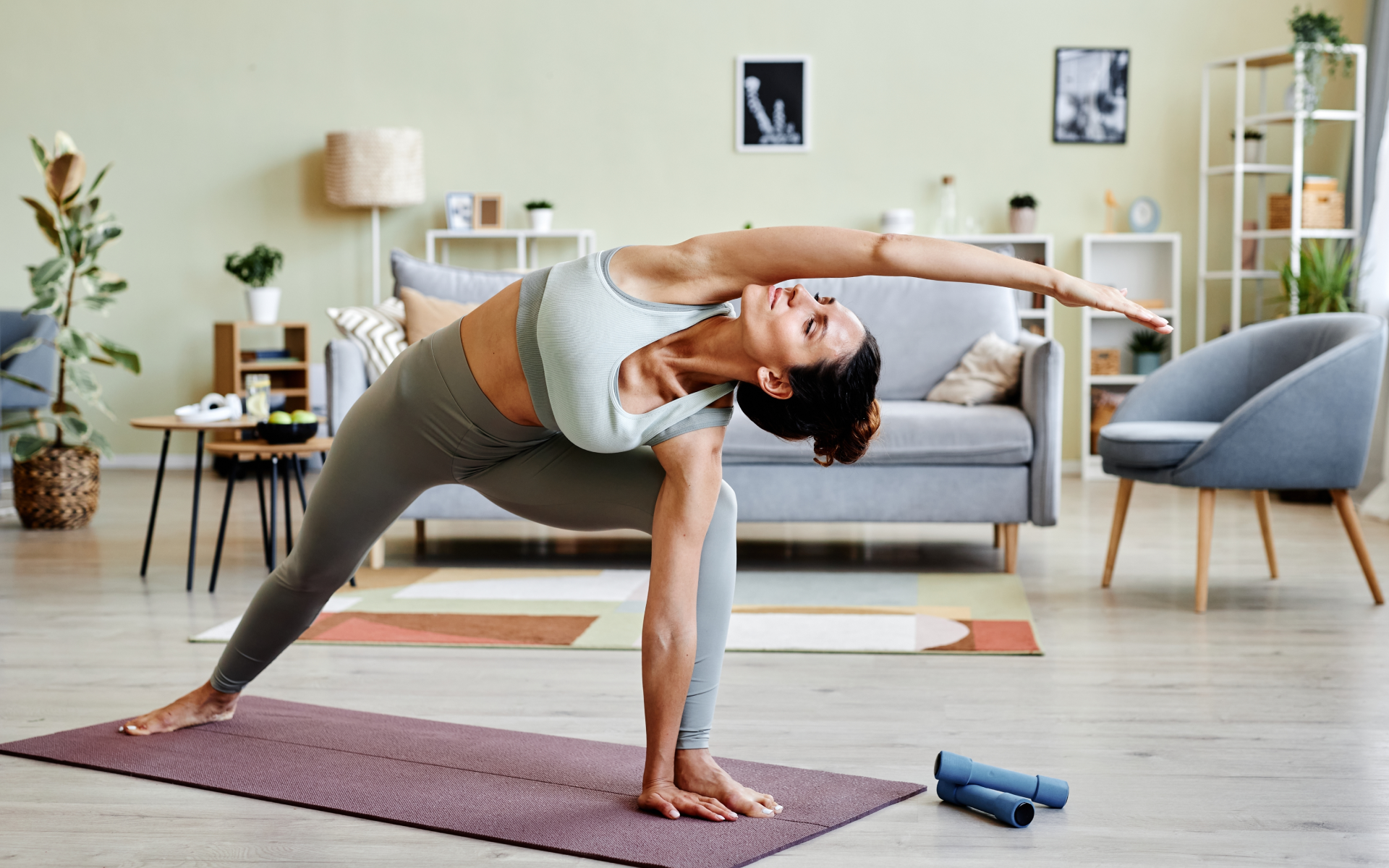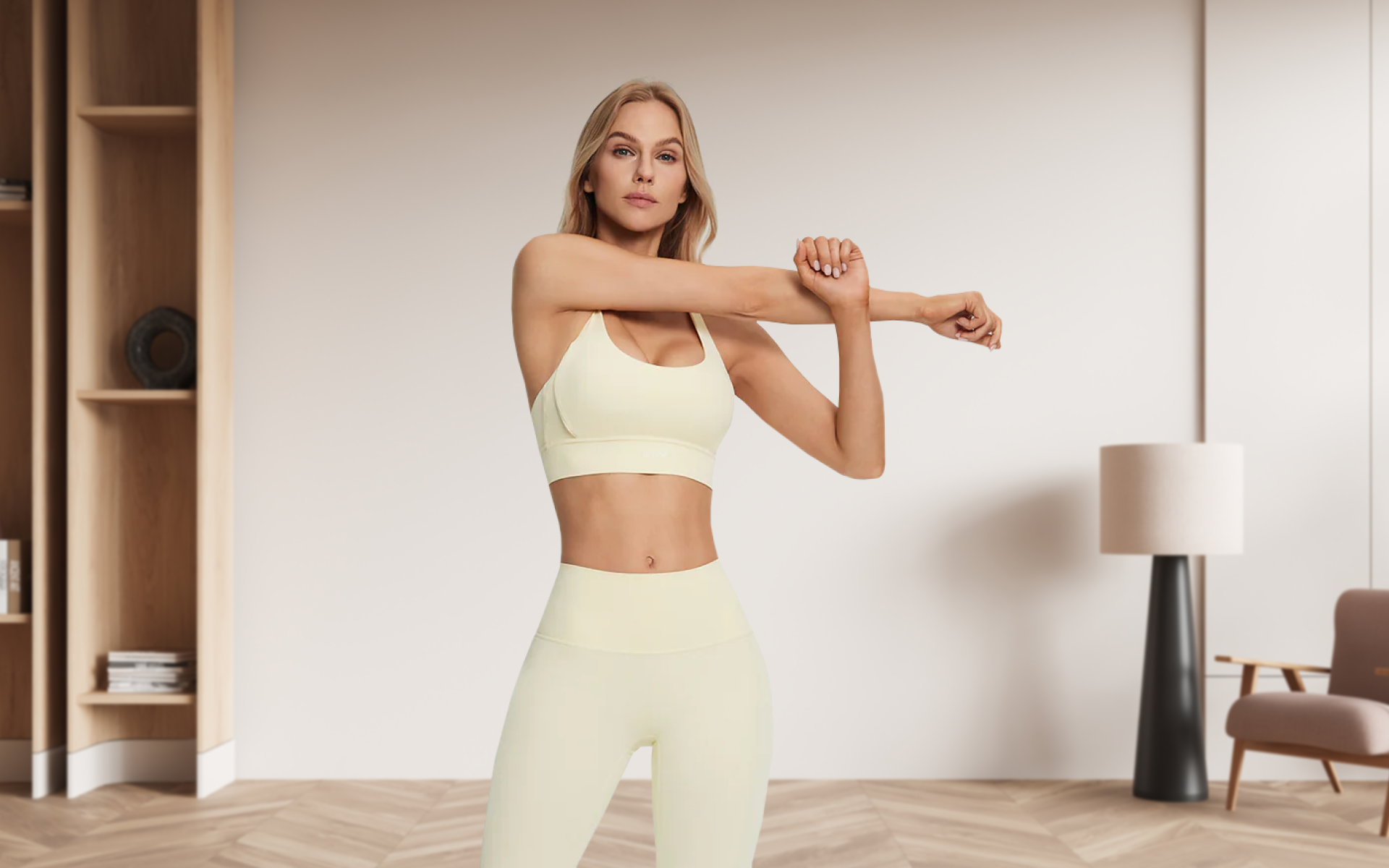Seniors may struggle to maintain independence. As they age, their reflexes slow down and muscles become weaker, which makes them more vulnerable to falls (1). For their own safety, they need to do balance pilates exercises regularly so they can move around without fear of falling.
Many seniors turn to Pilates as a form of gentle exercise that helps improve balance and coordination while also promoting overall strength and flexibility. Not only does Pilates help with physical well-being, it also has mental benefits such as reducing stress and improving mood (2).
This article provides 10 simple yet effective Pilates exercises seniors can do on their own to improve their balance.
But first, here are the answers to a few common questions seniors may have about Pilates:
Why Is Balance Important in Pilates?
Balance and Pilates have an interesting relationship. You need balance to perform Pilates exercises correctly, but at the same time, Pilates helps improve balance.
The core principle of Pilates is to strengthen the deep stabilizing muscles in the body, including those that support balance and posture (3).
By regularly practicing Pilates, seniors can improve their proprioception (the body’s ability to sense its position and movement in space) and develop stronger neuromuscular connections. This means they will have better control over their movements and be less likely to fall.
How Do You Improve Balance Through Pilates?
A consistent, well-rounded Pilates routine can help seniors improve their balance and coordination by targeting specific muscle groups. Pilates exercises focus on developing deep core strength and integrating the entire body into every movement, which leads to improved stability and balance (3).
Many Pilates exercises require concentration and control, which helps seniors become more aware of their body’s positioning in space and make necessary adjustments in order to maintain balance.
Although Pilates reformer balance exercises may be out of reach for seniors with significant balance deficits, there are safer but surprisingly effective alternatives:
Standing Pilates: This weight-bearing version improves proprioception and strengthens the muscles that are needed for balance.
Wall Pilates: A wall can provide support and stability for seniors while performing Pilates exercises. Using the wall as a prop helps with balance and allows them to focus on strengthening their core muscles.
Chair Pilates: Similar to using a wall, a chair also offers stability for seniors during Pilates exercises. It’s an excellent option for those who may have difficulty getting down on the floor.
Read more: The Ultimate Chair Yoga Poses for Balance
10 Pilates Exercises for Seniors to Improve Balance
The following Pilates balance exercises for seniors can be modified depending on a person’s needs and abilities. As always, consult a physician before you start any new exercise routine.
1. Seated Marching
This exercise strengthens the hip flexors and core muscles, which are essential for maintaining stability when walking or standing. By practicing lifting and lowering the legs, seniors enhance their coordination and leg strength, both crucial for balance.
Steps to perform:
- Sit comfortably on a sturdy chair with your back straight.
- Place your feet flat on the floor, hip-width apart.
- Brace your core by gently pulling your belly button toward your spine.
- Lift your right knee toward your chest as high as is comfortable.
- Hold the position briefly, keeping your upper body stable.
- Lower your right foot back to the floor.
- Repeat the movement with your left leg.
- Continue alternating legs in a steady, marching rhythm.
2. Wall Roll Down
This exercise enhances spinal mobility and core strength, which are essential for maintaining an upright posture and balance. The controlled movement helps improve proprioception, or the body’s sense of position.
Steps to perform:
- Stand with your back against a wall, feet hip-width apart and slightly away from the wall.
- Relax your shoulders and allow your arms to hang by your sides.
- Slowly tuck your chin to your chest, beginning to roll down through your spine.
- Peel your back off the wall one vertebra at a time.
- Let your arms dangle freely as you roll forward.
- Descend only as far as is comfortable, maintaining soft knees.
- Pause at the bottom, feeling the stretch along your back.
- Roll back up slowly, re-stacking your spine against the wall.
This particular Pilates balance exercise may require some help or supervision from a trainer or caregiver. If that isn’t available, it may be best to skip this exercise.
3. Supported Standing Leg Lift
By focusing on one leg at a time, this exercise strengthens the supporting leg’s muscles and enhances stability. It also challenges the body’s balance by requiring the core to engage and maintain posture.
Steps to perform:
- Stand next to a chair or wall for support.
- Keep your posture tall with your shoulders back and down.
- Shift your weight onto your left leg.
- Lift your right leg straight out in front of you.
- Ensure your toes are pointing upward and your leg is parallel to the floor.
- Hold the position for a few seconds, engaging your core.
- Slowly lower your right foot back to the ground.
- Repeat the lift with your left leg, alternating legs.
4. Chair Seated Leg Circles
Circling the legs enhances the range of motion and strengthens the lower-body muscles, improving coordination and control. This exercise also promotes joint flexibility, which is essential for stable movement.
Steps to perform:
- Sit upright on a sturdy chair, feet flat on the floor.
- Extend your right leg straight in front of you.
- Begin drawing small circles in the air with your foot.
- Complete a set number of circles in one direction.
- Reverse the direction and make the same number of circles.
- Lower your right foot back down.
- Repeat with your left leg, ensuring the circles are smooth and controlled.
BetterMe: Health Coaching app helps you achieve your body goals with ease and efficiency by helping to choose proper meal plans and effective workouts. Start using our app and you will see good results in a short time.
5. Wall-Assisted Side Leg Lifts: One More Pilates Balance Practice
This exercise targets the hip abductors, which are essential for side-to-side stability. Strengthening these muscles helps prevent falls and improves overall leg strength and balance.
Steps to perform Pilates balance exercise:
- Stand with your left side next to a wall, placing your left hand on it for support.
- Keep your feet hip-width apart and your body upright.
- Shift your weight to your left leg.
- Lift your right leg out to the side, keeping it straight.
- Hold the lift briefly, feeling the contraction in your hip.
- Lower your right leg back down with control.
- Repeat the lift for a set number of repetitions.
- Switch sides, performing the same routine with your left leg.
6. Supported Heel Raises
Heel raises strengthen the calf muscles and improve ankle stability, which are essential for maintaining balance during walking and standing tasks.
Steps to perform:
- Stand behind a sturdy chair, holding onto its back for balance.
- Position your feet hip-width apart.
- Slowly rise onto your toes, lifting your heels off the ground.
- Maintain the position at the top for a few seconds.
- Lower your heels back to the floor slowly and with control.
- Repeat the rise and fall for a set number of repetitions.
- Focus on keeping your movements slow and steady to maximize muscle engagement.
7. Seated Torso Twists
This exercise enhances core strength and flexibility, which are crucial for maintaining a stable posture and preventing falls. It also promotes spinal mobility.
Steps to perform:
- Sit on a chair with your back straight and feet flat on the ground.
- Cross your arms over your chest.
- Engage your core by pulling your belly button inward.
- Slowly twist your torso to the right.
- Hold the twist for a moment, feeling the stretch through your core.
- Return to the center position.
- Repeat the twist to the left side.
- Continue alternating sides, keeping your twists smooth and controlled.
8. Seated Spine Stretch
The Pilates balance routine increases spinal flexibility and core strength, both of which are crucial for maintaining good posture.
Steps to perform:
- Sit on a chair with your feet flat on the floor, hip-width apart.
- Extend your arms forward, parallel to the ground.
- Gently round your back, reaching forward as if to touch your toes.
- Feel the stretch along your spine.
- Hold the stretch for a few seconds, breathing deeply.
- Slowly return to the starting position, stacking your spine upright.
- Repeat the stretch, focusing on smooth, controlled movements.
https://cdn.betterme.world/articles/wp-content/uploads/2024/08/8.png
9. Standing Hip Circles: Find Balance During Pilates
This exercise focuses on hip mobility and core stability, both of which are important for maintaining balance and preventing falls. It also strengthens the supporting leg.
Steps to perform:
- Stand next to a chair or wall for support.
- Raise your right knee to hip level.
- Begin drawing circles in the air with your knee.
- Perform a set number of circles in one direction.
- Reverse the direction of the circles.
- Lower your right leg and switch to the left leg.
- Ensure the movement is controlled, focusing on balance and stability.
10. Seated Toe Taps
Toe taps improve coordination and strengthen the lower legs, which enhances mobility and balance. This Pilates balance exercise also increases ankle flexibility.
Steps to perform:
- Sit on a chair with your back straight and feet flat on the floor.
- Lift your right foot slightly off the ground.
- Tap your toes on the floor a few times.
- Return your right foot to the floor.
- Lift your left foot and repeat the toe tapping.
- Continue alternating feet at a steady pace.
- Keep your core engaged to maintain an upright posture.
Find low-impact senior-friendly chair exercises in our Chair Exercises for Seniors 2 article.
FAQs
Is body balance more yoga or Pilates?
Body balance is a combination of both yoga and Pilates, incorporating elements from each practice to improve strength, flexibility, and balance (4). It also includes other exercises that target overall body stability and mobility.
However, the specific focus may vary depending on the instructor or program. Some classes may have a more yogic approach, while others may lean towards Pilates techniques.
What is considered the hardest Pilates workout?
The hardest Pilates workouts are often those that incorporate advanced exercises and equipment, such as the reformer or Cadillac. These challenging exercises require a high level of strength, flexibility, and control, which makes them more difficult for beginners to perform.
However, the intensity of a workout can also depend on an individual’s fitness level and familiarity with Pilates movements. Some may find certain exercises harder than others based on their body’s strengths and limitations.
These Wall Pilates Beginner Workouts are perfect for newbies and even intermediates on a Pilates journey.
What is the 3-2-1 Pilates method?
3-2-1 stands for three days of strength training, two days of Pilates, and one day of cardio work. The idea behind this workout split is to create an all-round fitness regimen.
Does Pilates balance hormones?
Some research suggests that Pilates can influence hormone levels, such as cortisol and serotonin, which are related to stress and mood. A few studies have shown that regular Pilates practice may help manage stress and improve mood by affecting these hormones (6).
However, the direct impact of Pilates on balancing hormones overall isn’t extensively documented, and more research is required to draw definitive conclusions.
Can Pilates fix muscle imbalance?
Pilates is known for its focus on core strength, flexibility, and overall body awareness, which can be beneficial for addressing muscle imbalances.
By emphasizing controlled movements and proper alignment, Pilates helps strengthen weaker muscles and stretch tighter ones, which promotes a more balanced musculature (7).
Regular practice can improve postural control, enhance coordination, and increase body awareness, all of which contribute to correcting muscle imbalances over time.
We’ve compared the pros and cons of Pilates vs Strength Training for muscle in our previous article.
How do you train balance?
Balance can be trained through various exercises that challenge the body’s stability and coordination. Examples include balancing on one leg, standing on an unstable surface, or performing movements that require shifting weight from side to side.
Specific activities such as yoga, Pilates, and tai chi also incorporate balance training into their practice. Consistent practice of these exercises can improve balance and stability over time.
Incorporating strength and flexibility training can also contribute to overall improved balance. Exercises that target the core, legs, and ankles can improve the body’s ability to maintain balance in different positions.
Conclusion
Body balance is an essential aspect of physical health that is often overlooked in traditional fitness routines. By incorporating exercises that promote stability, strength, and flexibility into your workout routine, you can improve your balance and reduce your risk of falls and injuries. Pilates offers an excellent way to develop these skills while also providing other benefits for overall well-being.
Seniors can use a wall, chair, or other support while performing these exercises to ensure safety and stability. Consult a healthcare professional before you start any new exercise routine, particularly if you have pre-existing conditions or injuries.
DISCLAIMER:
This article is intended for general informational purposes only and does not serve to address individual circumstances. It is not a substitute for professional advice or help and should not be relied on for making any kind of decision-making. Any action taken as a direct or indirect result of the information in this article is entirely at your own risk and is your sole responsibility.
BetterMe, its content staff, and its medical advisors accept no responsibility for inaccuracies, errors, misstatements, inconsistencies, or omissions and specifically disclaim any liability, loss or risk, personal, professional or otherwise, which may be incurred as a consequence, directly or indirectly, of the use and/or application of any content.
You should always seek the advice of your physician or other qualified health provider with any questions you may have regarding a medical condition or your specific situation. Never disregard professional medical advice or delay seeking it because of BetterMe content. If you suspect or think you may have a medical emergency, call your doctor.
SOURCES:
- Falls and Fall Prevention in Older Adults (2023,nih.gov)
- The health benefits of Pilates for your mind and body (2024,cbhs.com.au)
- Pilates and improvement of balance and posture in older adults: A meta-analysis with focus on potential moderators (2022,sciencedirect.com)
- The Impacts of Pilates and Yoga on Health-Promoting Behaviors and Subjective Health Status (2021,nih.gov)
- Pilates Exercises Influence on the Serotonin Hormone, Some Physical Variables and the Depression Degree in Battered Women (2011,pilatesfisios.it)
- Benefits of Daily Stretching with Pilates (2024,evergreenclinic.ca)
